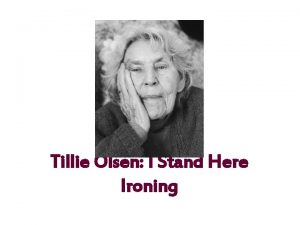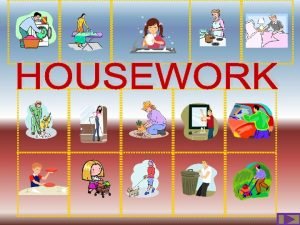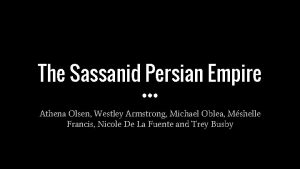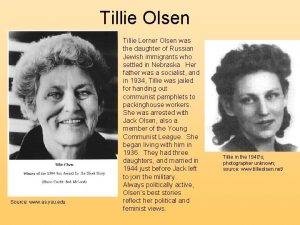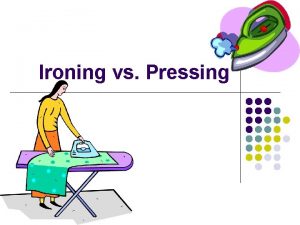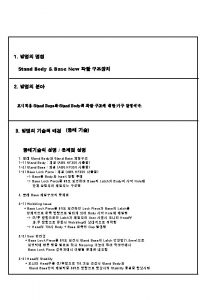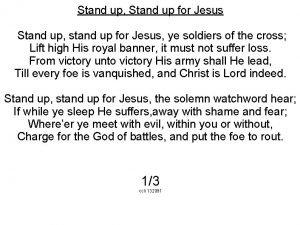Tillie Olsen I Stand Here Ironing THE GREAT




















- Slides: 20

Tillie Olsen: I Stand Here Ironing

THE GREAT DEPRESSION





Great Depression (Video)

Monotony ~ Imagine you are alone in the midst of a simple, repetitive activity, such as a household chore or manual task. "What happens in your mind as you perform this chore or task? "

~Imagine the woman in the painting looked up and saw you. How does she feel about your presence (startled, angry, happy, embarrassed, etc. )? What was she thinking about before you came in? Who is she? What does she want you to know about herself? **Write for 5 minutes. Try to keep your pen going Pablo Picasso

Time to read…

Study Questions 1. Spend two minutes brainstorming a list of words and phrases that come to mind when they think about the mother and Emily. Then circle those items you think are the most significant. 2. "What is the story telling us about ______? " find support for this theme in the story

The Five Themes of I Stand Here Ironing 1. 2. 3. 4. 5. Separation Nourishment Maternal anguish Choice Time. **In your groups, read the overview of theme you are assigned. -Then go back to the story and locate support for theme. Make sure you explore the whole story and underline the textual support you find.

Elements of a Monologue • an audience is implied • there is no dialogue • she speaker speaks through an assumed voice—a character, a fictional identity, or a persona. a monologue is one person’s speech, it is offered without overt analysis or commentary, placing emphasis on subjective qualities that are left to the audience to interpret.

Tips for Writing a Good Monologue • Choose a theme • Your Character’s Voice Distinct and Consistent • Pay Attention to the Rhythm and Shape of Your Monologue • Know Your Audience, Know Your Audience!

Writing Assignment: Write a Monologue Homework Assignment 1. Study each photo and choosing one to focus on. 2. Choose one family member in that photograph for whom you will write a monologue. 3. Copy questions for Monologue Guideline Sheet 4. Fill out the sheet in regard to the family member in the photo you select.

Monologue Assignment Tips • meet the definition of a dramatic monologue, • accurately and appropriately represent the character in a voice that seems authentic to that individual, • reflect a knowledge of the character and his/her role in the story, and • reveal some previously unknown facet of the character’s life (i. e. , the audience should gain a deeper understanding of

Monologue Guideline Sheet 1. What is the approximate age and gender of the person you chose? 2. Describe the clothes he/she is wearing. (Be as descriptive as you can. ) 3. Describe the facial expression of the person. (Be as descriptive as you can. ) 4. What do you think this person had been doing right before this picture was taken? 5. Does this person want his/her picture taken? Why? 6. What do you think is important to him/her?

HONORS EXTENSION 1. 2. 3. 4. 5. Who is the “you” addressed in paragraphs 1, 3, and elsewhere in the story? Does the narrator intend to go see the person that she mentally addresses in the story? Why or why not? In what ways is the current situation part of a larger pattern of events in the life of the narrator? List the important facts of Emily’s childhood. Under what circumstances was she raised? What is the state of her physical and emotional well being? List some of the mistakes that the narrator made in raising Emily. Is she aware or unaware of these mistakes? Are there any factors in their lives that are beyond her control? What is happening in Emily’s life at the present? How has she turned out? What does this reveal about her (and maybe about young people and the human spirit in general)?

Follow-up Group work 1. Share your monologues with your group. Pay attention to the differences in how each of you presented the woman. 2. Discuss for two or three minutes the differences you noticed. 3. Determine who might want to share

Peer Edit Monologues ~Read the monologue of your partner. Determine whether the monologue you read contained themes. Write or Circle themes & be prepared to share them with the class.
 Tillie olsen i stand here ironing full text
Tillie olsen i stand here ironing full text Extreme ironing
Extreme ironing Lighthouse effect in mastoiditis
Lighthouse effect in mastoiditis She is doing the ironing
She is doing the ironing Post test unit 1
Post test unit 1 Cold ironing regulations
Cold ironing regulations Marie bendix olsen
Marie bendix olsen Karen holm olsen
Karen holm olsen Kristbjörg heiður olsen
Kristbjörg heiður olsen Sassi uthsc
Sassi uthsc Logan olsen
Logan olsen Tava olsen
Tava olsen Olsen restaurante
Olsen restaurante Athena olsen
Athena olsen Dylan knut olsen bokvist
Dylan knut olsen bokvist Tagudskiftning roskilde
Tagudskiftning roskilde Undergraduate research conference nyu
Undergraduate research conference nyu Riley olsen
Riley olsen Ieee1722
Ieee1722 Lindsay olsen singer
Lindsay olsen singer Scaling law
Scaling law
